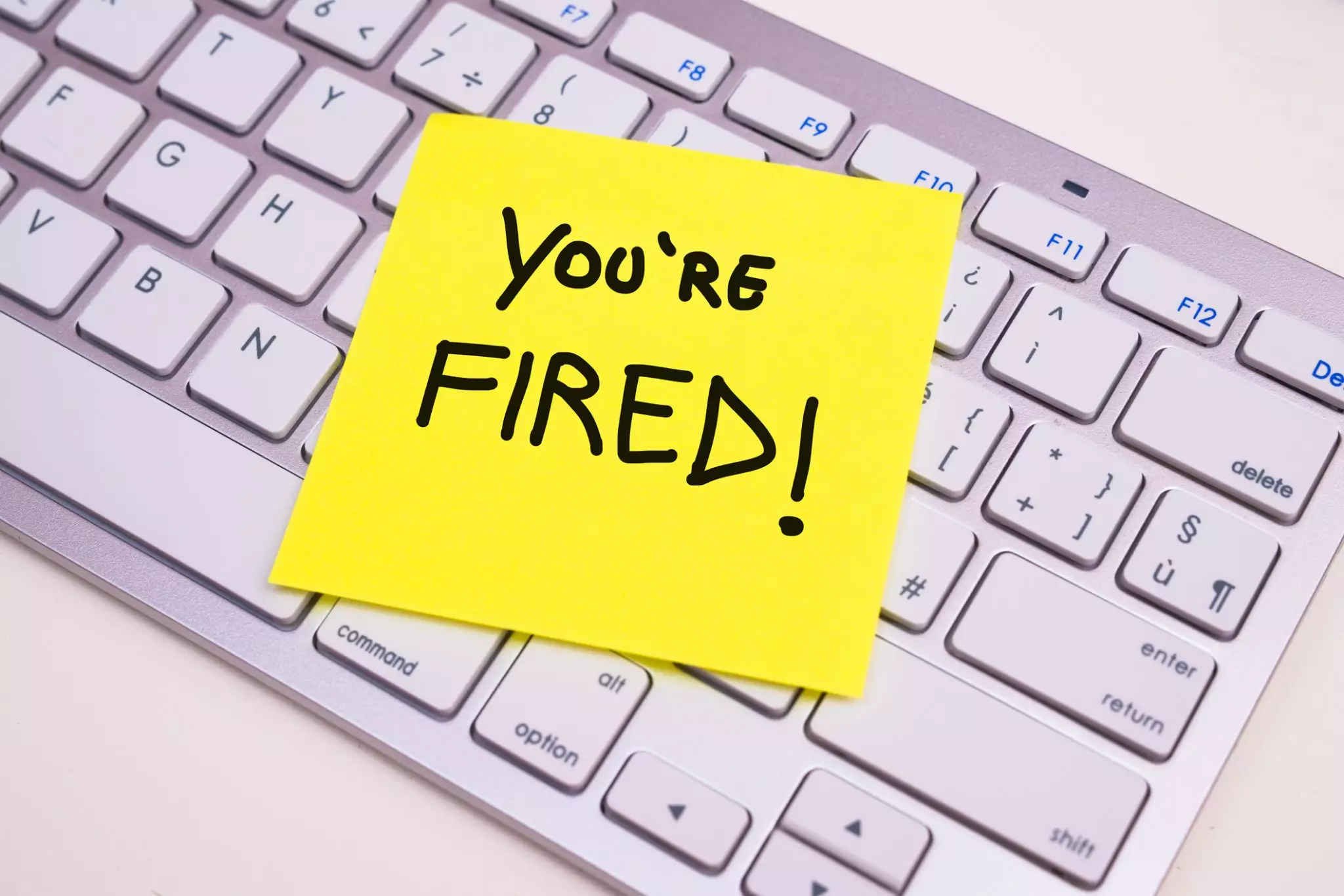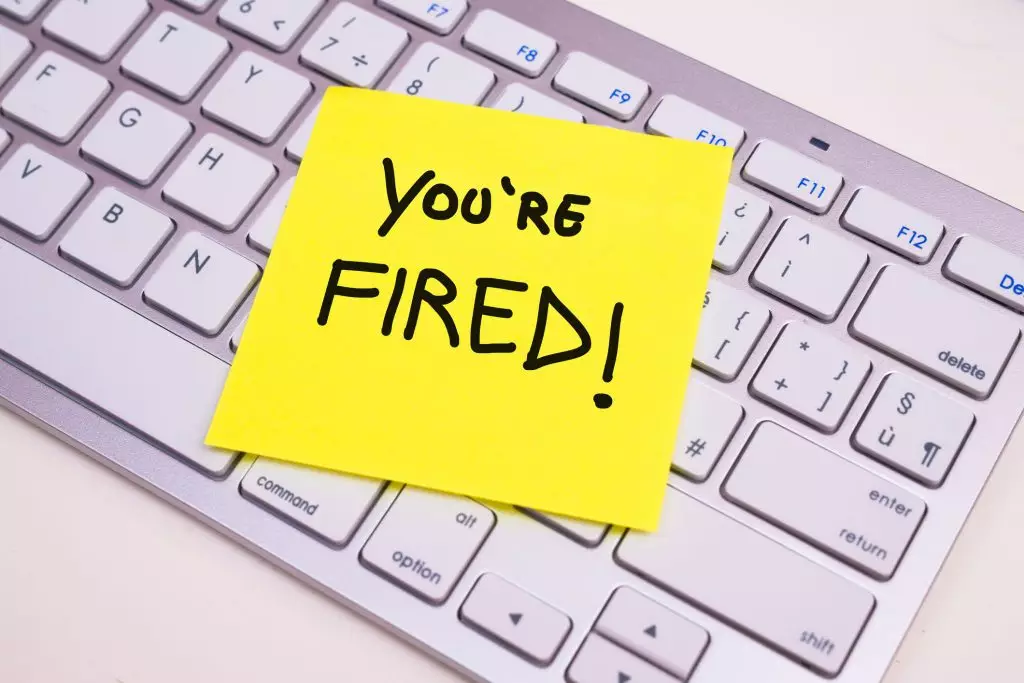The Risks of Firing Employees

In this series of posts, we’re talking about something that affects a lot of businesses, small and large: the risks associated with firing an employee. If a firing isn’t handled the right way, it can ultimately mean huge financial or legal ramifications for a business. Despite the pitfalls that can come with firing employees, it’s not an area a lot of organizations focus on regarding training or preparing. This series of articles covers recent news stories related to high-profile firing, the risks of firing employees, legal considerations to keep in mind, and how to train employees on proper protocols.
Examples from News Events
A lot has happened in the news when it comes to employees being fired. From the federal government to private corporations, it seems folks are getting the boat right and left. Remember the story of Andrew McCabe, who served as the FBI deputy director? McCabe was fired by former Attorney General Jeff Sessions. McCabe hoped to retire, which would have allowed him to receive his pension and other benefits. Since he wasn’t able to retire and was instead fired, that is off the table for now.
The reason for the firing, according to Attorney General Sessions was because McCabe reportedly was dishonest when speaking under oath. According to a statement about the firing, the FBI expects all employees to be held to the utmost standards of honesty and accountability.

The FBI recommended McCabe be dismissed based on its own disciplinary guidelines, and he took a leave of absence in January. What’s called “lack of candor” is a fireable offense at the FBI, but McCabe claims he was fired because of politicization of the situation.
McCabe described his firing as part of President Trump’s ongoing war with the FBI, as well as Robert Mueller and his special counsel investigating any links to Russian interference in the presidential election.
Another story that came to light recently occurred at Google. A former employee claims he was fired because Google discriminates against political conservatives and white men. James Damore filed a lawsuit because of his firing.
A former employee at UC Berkeley was hired as an administrative officer at Berkeley and was ultimately fired for not being a good fit for the department. The fired employee said during his time there, issues of work ethic, professionalism or production were never brought up, and the employee thinks he was wrongfully terminated.
These stories are just a tiny sample of what’s going on right now. Sometimes employees have a case, and other times they don’t when it comes to wrongful termination claims and suits.
Ultimately, it’s up to employers to make sure they’re following all the laws and best practices to protect themselves against similar situations.
Risks of Firing Employees
Some general risks can occur for businesses, particularly if they’re small or mid-sized, when it comes to firing employees.
- The employee can sue. Even if the employee ends up ultimately losing in court, the business has to shoulder the burden of the legal fees and other costs that go along with a lawsuit. If a business has actually violated state or federal laws protecting employees against wrongful termination, it gets even more expensive.
- When an employee is fired, there is always the risk of losing trade secrets and company property. Employers need to have a plan in place to protect themselves in these areas so that employees who are on the way out don’t have access to files, information, and in certain situations, an employee may be able to disclose things to competitors that would allow them to gain an advantage.
- Employer brand is extremely important in today’s online and digitally-driven world. What a former employee says, whether it’s true or not, can affect how new potential employees view the company. It can also affect how everyone sees your company brand.
- If an employee is fired and particularly if it isn’t handled in the best way, it can damage company morale and corporate culture. Employees may start to feel like they could be next, and they may see the fired employee as a victim of cutthroat employers. A lot of employers don’t take the time to mitigate the risks to employee psyche, morale and productivity when they fire an employee.
- It’s expensive to fire an employee because you’re going to have to hire someone else to replace them. That’s why the costs of turnover are so often discussed. As the employer, it’s up to you to make sure you can cover the work of the fired employee until a replacement is brought in. Once that replacement comes in, you’re going to have to onboard and train them. That’s assuming you can even find someone to fill the spot, which is tough considering the skills gap most businesses are facing.
Does all this mean you should never fire an employee? Of course not. Sometimes bad employees need to be fired. This is especially true if they’ve had many opportunities to improve their performance or behavior or they’re doing something fraudulent.
With that being said, the responsibility to make sure the business is protected is squarely on the shoulders of the employer.
Firing an employee isn’t just as easy as telling them to leave. There are so many legal and logistical considerations to keep in mind before you ever sit an employee down and have the dreaded conversation.
In many cases, it’s not necessarily a business owner who is firing an employee. It’s often their direct supervisors and managers. For that reason, it’s essential to make sure the people with firing authority are doing things the right way.
Any firing should come only after due diligence is done, records are maintained, incidents are documented, and there is oversight to make sure laws and regulations are being followed. If there are alternatives to firing, consider leveraging those.
It may be frustrating to have to do this, especially when an employee deserves to be fired, but these are necessary steps.
In our next post, we’ll discuss some of the main things that should be considered before an employee is fired.